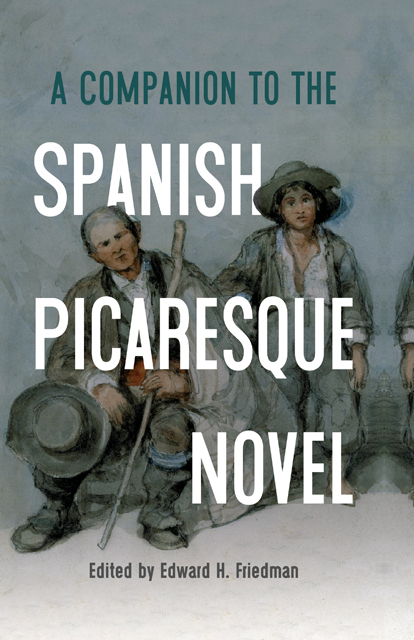Book contents
- Frontmatter
- Contents
- List of Illustrations
- List of Contributors
- Foreword
- 1 The Picaresque as a Genre
- 2 On the Picaresque and Its Origins
- 3 Francisco Delicado, La lozana andaluza
- 4 Lazarillo de Tormes
- 5 Mateo Alemán, Guzmán de Alfarache
- 6 Francisco de Quevedo, La vida del Buscón
- 7 La pícara Justina
- 8 Alonso Jerónimo de Salas Barbadillo, La hija de Celestina
- 9 Miguel de Cervantes and the Picaresque
- 10 Vicente Espinel, Marcos de Obregón
- 11 Carlos García, La desordenada codicia de los bienes agenos
- 12 Estebanillo González
- 13 Critical Approaches to the Picaresque
- 14 The Picaresque in Spanish America
- 15 Continuations: France and England
- 16 The Continuity of the Picaresque: Spain
- Bibliography
- Index
- Tamesis • Companions
3 - Francisco Delicado, La lozana andaluza
Published online by Cambridge University Press: 11 January 2023
- Frontmatter
- Contents
- List of Illustrations
- List of Contributors
- Foreword
- 1 The Picaresque as a Genre
- 2 On the Picaresque and Its Origins
- 3 Francisco Delicado, La lozana andaluza
- 4 Lazarillo de Tormes
- 5 Mateo Alemán, Guzmán de Alfarache
- 6 Francisco de Quevedo, La vida del Buscón
- 7 La pícara Justina
- 8 Alonso Jerónimo de Salas Barbadillo, La hija de Celestina
- 9 Miguel de Cervantes and the Picaresque
- 10 Vicente Espinel, Marcos de Obregón
- 11 Carlos García, La desordenada codicia de los bienes agenos
- 12 Estebanillo González
- 13 Critical Approaches to the Picaresque
- 14 The Picaresque in Spanish America
- 15 Continuations: France and England
- 16 The Continuity of the Picaresque: Spain
- Bibliography
- Index
- Tamesis • Companions
Summary
This chapter analyzes Francisco Delicado’s La lozana andaluza (The Lusty Andalusian Woman) in the context of the literary production of “Spanish Rome,” a term that highlights the importance of Spanish cultural and political activity in the city. It considers the role this work occupies within scholarship on the picaresque, and the female picaresque more specifically, as well as within humanistic and satirical discourses about life at the Roman curia.
La lozana andaluza was composed in Rome before the 1527 sack of the city and was later expanded and printed anonymously in Venice ca. 1528. There is only one extant copy of the early modern edition, preserved at the Austrian National Library. This copy was previously held at the Imperial Library, and it is bound with a series of Castilian humanistic works. It is hardly a coincidence that a book that exudes movement and portrays migration and exile as fundamental traits of early modern Iberian and Roman societies also traveled through the roads of the Spanish empire, sharing the paths of people and objects as they moved through its borders.
Through its over one hundred characters, La lozana andaluza sketches the lives of migrants of different religious and social backgrounds in Spanish Rome. The text portrays female fortunetellers, laundresses, servants, handmaids, surgeons, tricksters, and courtesans who trade with love, beauty, and sex, as well as other non-elite women who lived in or migrated to Rome due to religious, socio-economic, or personal circumstances in order to carry out an independent life. In a city marked by a culture of celibacy, these women shared spaces, and ideas such as Erasmist and apocalyptic beliefs, with bishops, priests, ambassadors, secretaries, soldiers, and rascals. The book’s main character, Lozana, is a woman, most likely of converso origin, who leaves Spain to embark on a Mediterranean journey. She is skilled in all arts, from cosmetics to surgery, and a master of all trades.
A first draft of the text, no longer extant, was written ca. 1524. It echoed a genre of literature that explored Roman love outlets and courtly life, guiding newcomers and readers through the social dynamics of the city.
- Type
- Chapter
- Information
- A Companion to the Spanish Picaresque Novel , pp. 20 - 29Publisher: Boydell & BrewerPrint publication year: 2022



